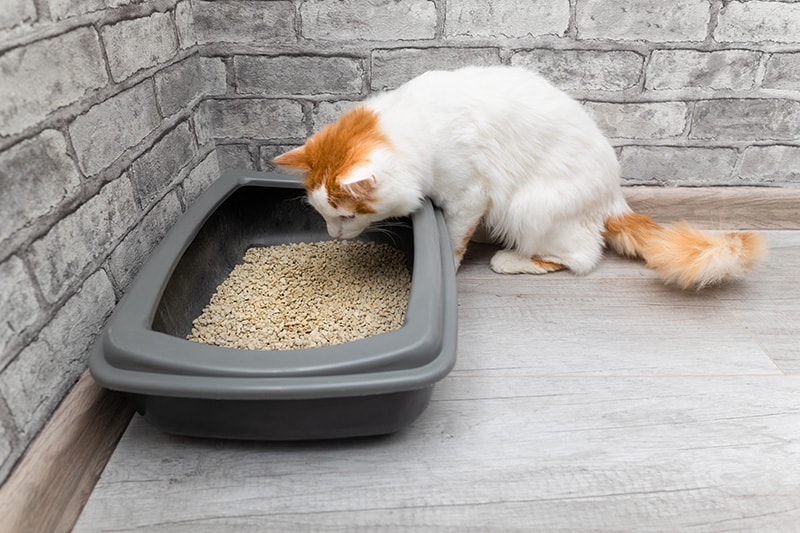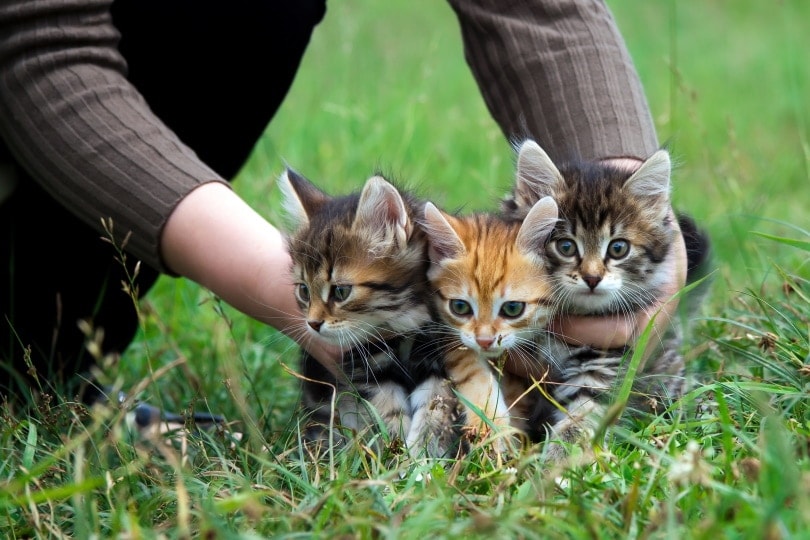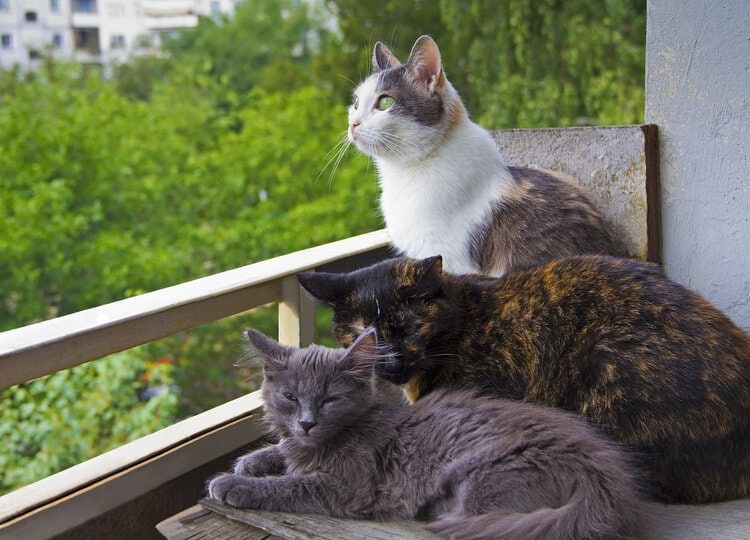Cat Food vs. Dog Food: Main Differences Explained

Updated on
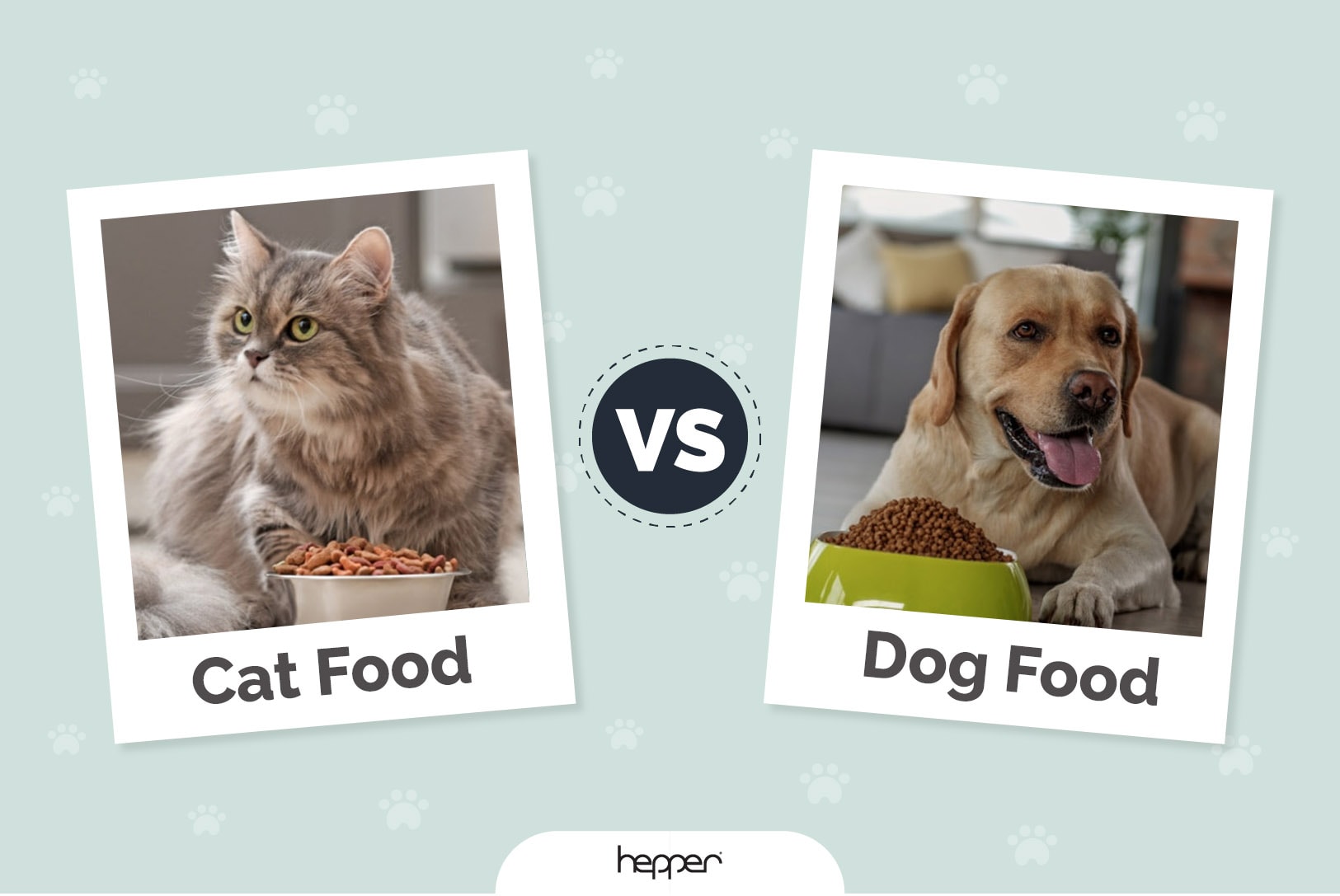
Click to Skip Ahead
At first glance, the only obvious differences between cats and dogs are their mannerisms and appearance. Their differences go deeper than that, though, and include the vital nutritional requirements for both animals. These requirements are important to remember, especially if you have both cats and dogs.
While dogs can eat cat food and vice versa, it’s not recommended, and neither animal will have optimal nutritional balance when eating meals designed for the other. Cat food, in particular, is specially formulated to provide the nutritional requirements of cats. Unlike dogs, cats don’t produce many of their own amino acids and vitamins, so they require their diets to contain certain amounts to ensure that they stay healthy. Taurine, thiamine, vitamin A, and arachidonic acid are all essential nutrients that cats need that dog food doesn’t contain. That said, dogs aren’t likely to thrive solely on cat food either. Cat food is likely to give them an upset stomach, and the higher protein content can damage their liver and kidneys.
When it comes to dog and cat food, it’s always best to feed your pet with food designed for them. This guide will explain more about the differences between these foods and why it’s important to stick with the right diet for your pet.
At a Glance
- High protein
- Meat-based
- Wet and dry formulas
- Meets AAFCO requirements for cats
- A mixture of meat and plant protein
- Wet and dry formulas
- Meets AAFCO requirements for dogs
Overview of Cat Food
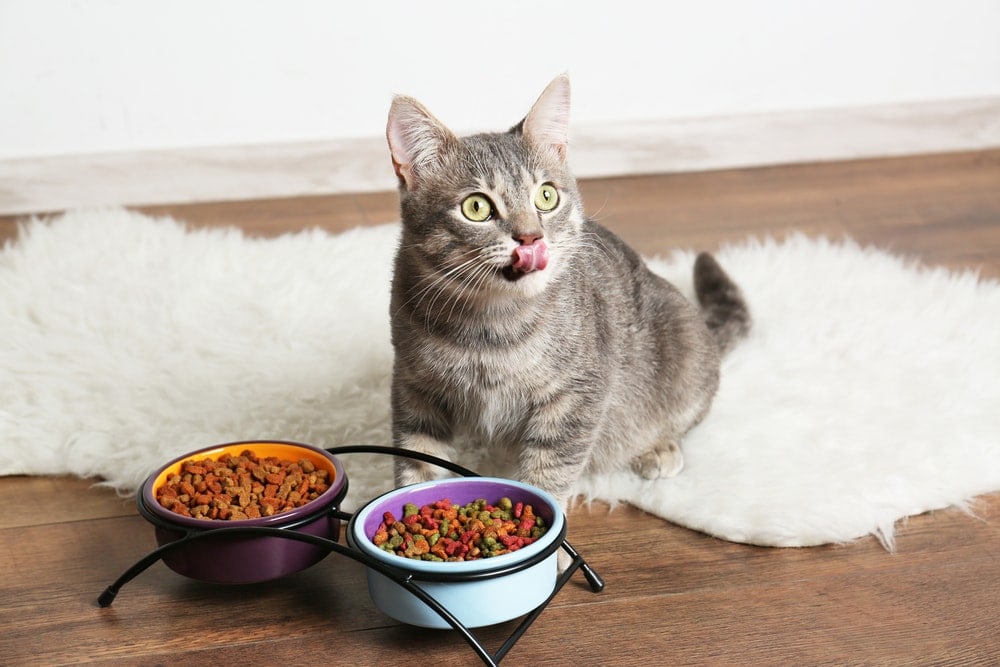
Tailored to Feline Nutritional Requirements
Cat food is designed to support the health of cats. It contains the essential vitamins, minerals, amino acids, and protein that cats can’t produce for themselves. As obligate carnivores, cats require a diet richer in animal protein than dogs do and get most of their nutrients from meat. Deficiencies in these nutrients can cause a range of symptoms that range from blindness and loss of coordination to seizures and death.
Can Dogs Eat Cat Food?
The higher meat content in cat food can make it smell appetizing to canine noses, which is why many dogs are more than happy to push your unsuspecting cat out of the way to devour their dinner for them. Your dog’s interest in cat food can make it easy to believe that it would be better for them, particularly if they frequently turn their nose up at their own food.
If you’ve accidentally given cat food to your dog, it’s unlikely to cause serious problems but may cause vomiting or diarrhea. These issues don’t affect all dogs after eating cat food, but that doesn’t mean they can live on it long-term.
Cat food is designed for cats, and your dog can suffer from stomach aches, obesity, and pancreatitis if they eat too much.
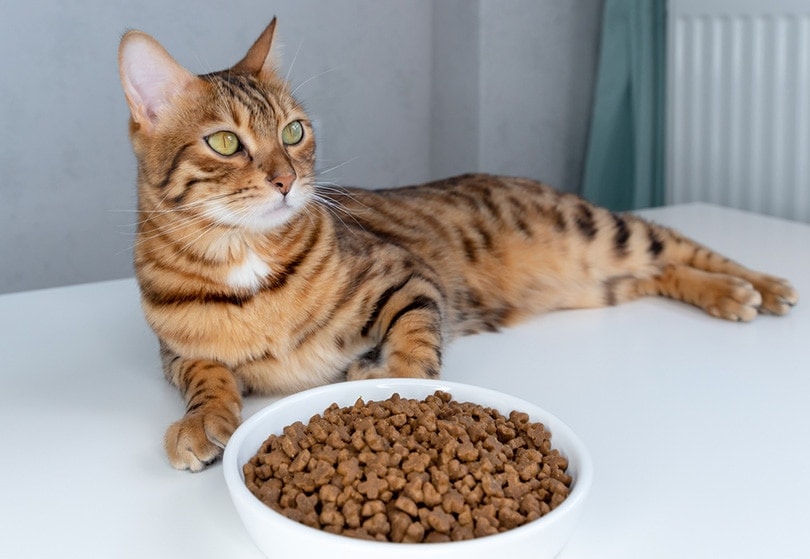
- Nutritionally balanced for cats
- High in protein
- Contains taurine; vitamins A, B, and D; and arachidonic acid
- Wet and dry formulas
Overview of Dog Food

Tailored to Canine Nutritional Requirements
Unlike cats, dogs are omnivores. This means that while cats can survive on a meat-based diet, dogs need fruit, vegetables, and healthy grains along with meat to stay healthy. Due to this, dog food often contains more plant matter than cat food does. If you pay attention to the ingredients in dog food, you’ll likely notice rice, barley, oats, and vegetables like sweet potato or spinach, depending on the recipe.
Can Cats Eat Dog Food?
Cats can technically eat dog food, but they should not be fed it long-term. Dog food doesn’t contain the right levels of protein, vitamins, or arachidonic acid that cats require. While you can find a few nutrients that cats need in dog food, like taurine, it isn’t enough to be suitable for cats. There are also ingredients in dog food that can be toxic to cats, such as propylene glycol, which has been banned in cat food by the FDA.
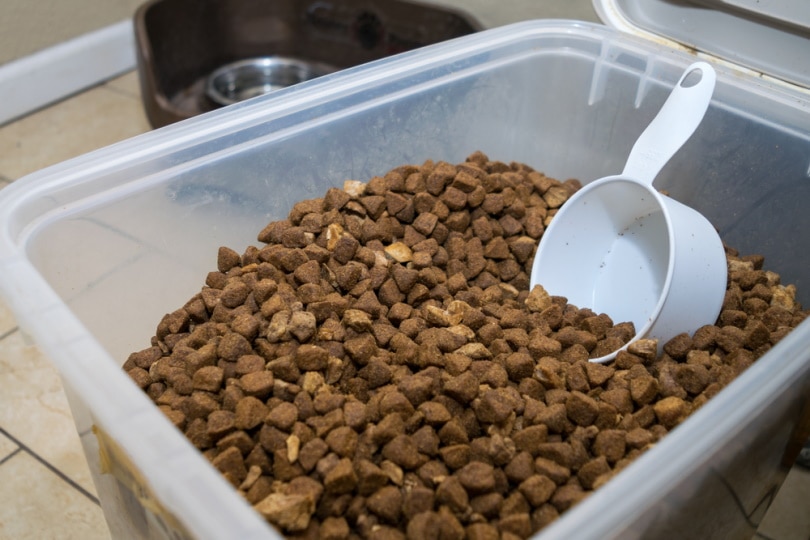
- Nutritionally balanced for dogs
- Contains both meat and plant material
- Wet and dry formulas
What Are the Differences Between Them?
Unless you compare both cat and dog food side by side, it can be difficult to understand just how different they are. Here are the biggest differences between these foods — both wet and dry — so you can see more clearly how they differ.
Arachidonic Acid
- Edge: Cat food
Fatty acids like arachidonic acid are important for healing purposes (like blood clotting), gastrointestinal and reproductive function, and healthy skin growth. Dogs can make most of their required nutrients themselves if their bodies take in the right building blocks, and arachidonic acid is one of them.
Cats can’t do this, but they still need these fatty acids for vital bodily functions. Due to this, arachidonic acid is one of the essential amino acids that must be in the feline diet, which is often left out of dog food.
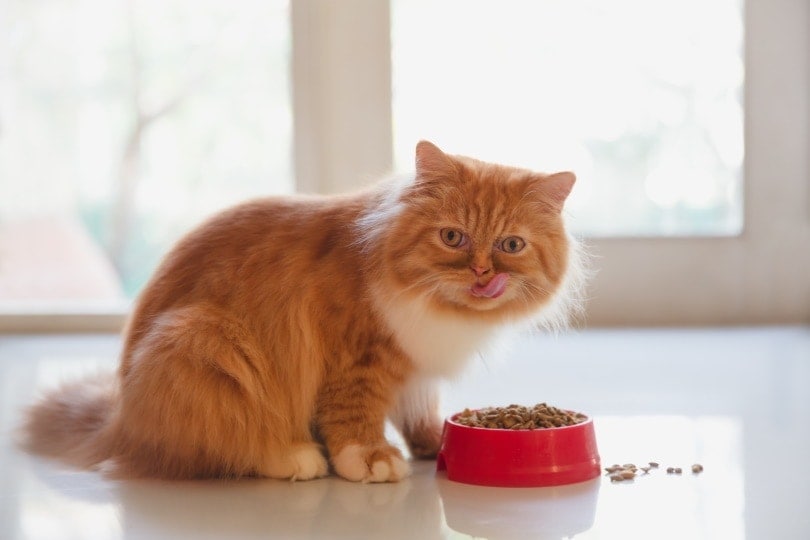
Ingredients
- Edge: Tie
Generally, the ingredients in cat and dog food only have a few differences. The recipes are designed to benefit the needs of the respective species. Both foods contain meat to satiate the carnivorous natures of both cats and dogs, but dog food often contains more plant matter than cat food does.
Protein
- Edge: Cat food
You can get high-protein dog food that’s designed to support the lifestyle of active breeds, but dogs often require less protein than cats do. Dogs also benefit more from a mixture of animal and plant protein, and the rich, meat-based diet that cats survive on can be difficult for dogs to digest, especially if they’re not used to such high levels of protein in their diet.
Too much protein in a dog’s diet can also have a detrimental effect on the welfare of their internal organs, like the kidneys and liver.
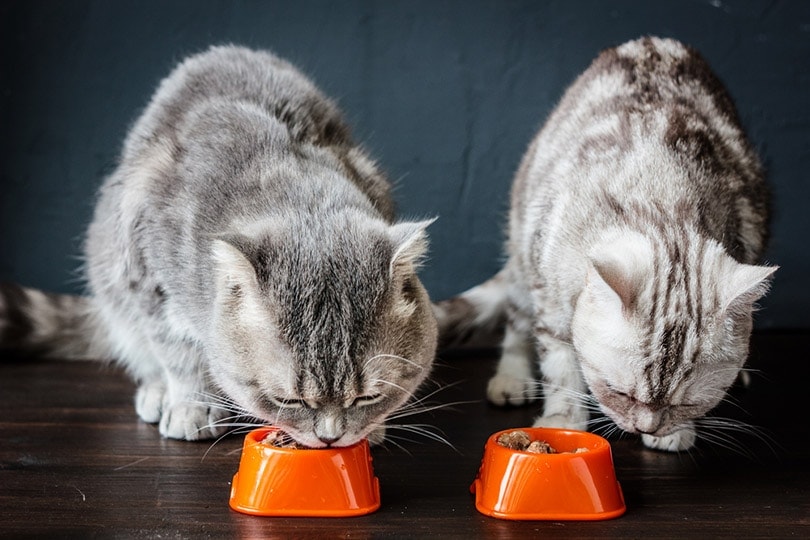
Propylene Glycol
- Edge: Dog food
Although it’s generally considered safe by the FDA and is non-toxic to dogs, the use of propylene glycol has been banned in cat food. It’s used to preserve moisture in semi-moist foods, particularly in certain dog treats. The toxicity to cats is why it’s a bad idea to let your cat eat food designed for dogs and why you should get them their own treats.
Not all dog food contains propylene glycol, so your cat might be fine if they eat some, but it’s best not to risk it.
Taurine
- Edge: Cat food
One of the essential amino acids that cats need but dogs don’t is taurine. You might have noticed taurine included in the ingredients on your dog food, but since dogs can make it themselves, the levels of taurine in dog food aren’t nearly high enough for cats.
Taurine deficiency is one of the most common diagnoses when cats eat the wrong food. It’s why making your own cat food at home is often more dangerous than making homemade dog food. If your cat doesn’t have enough taurine in their diet, they can suffer from blindness, deafness, or heart failure. Your cat’s need for taurine is why cat food contains much higher levels than dog food does.
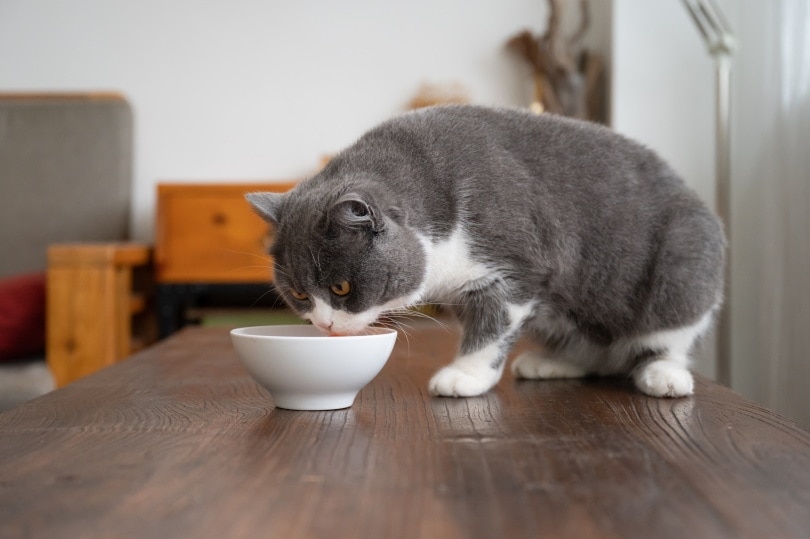
Thiamine
- Edge: Cat food
Like taurine, thiamine is an essential nutrient that cats need more of than dogs do. Some foods can even be detrimental to your cat’s ability to absorb the thiamine that they need. For example, raw freshwater fish can cause problems if your cat eats too much, due to an enzyme that breaks down thiamine and prevents your cat’s body from utilizing the nutrient.
Thiamine is another ingredient that you can sometimes find in dog food, but the levels aren’t nearly enough for cats to live on. Deficiencies can cause loss of appetite, poor coat health, seizures, and death.
Size
- Edge: Tie
If you’re familiar with dog food, you might have noticed that the dry kibble options for large and small breeds are often vastly different sizes. The size of the food makes it easier for smaller or larger mouths to chew on. Cat food is also designed to suit a cat’s mouth. While the difference would not be that much if you have small dogs, the smaller kibble size would be difficult for large dogs to chew, even if it was a good choice for them to eat.
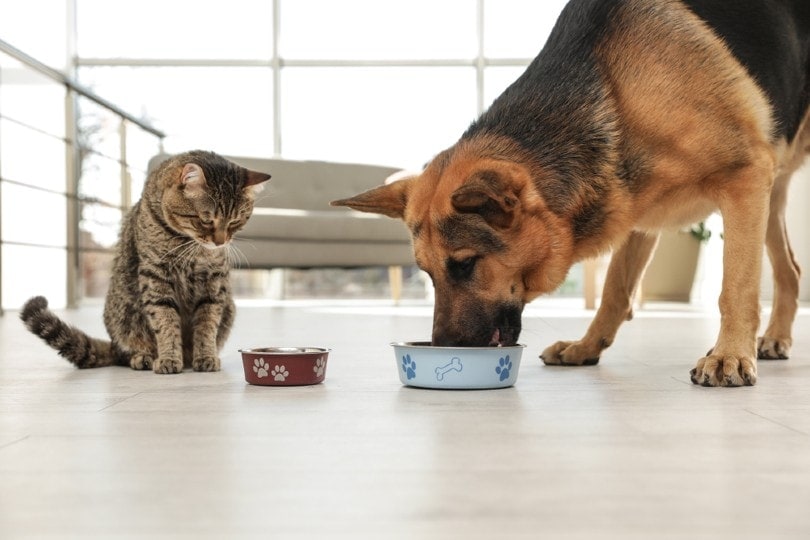
Vitamins A and D
- Edge: Cat food
The vitamins in cat food often differ from those in dog food. While dogs can also benefit from these vitamins, they don’t need to ingest specific ones to create the nutrients that they need. For example, dogs can convert beta carotene — which is found in vegetables like carrots — into vitamin A, which cats can’t do.
Vitamin D is present in both cat and dog food. Like thiamine and taurine, the amount of vitamin D present in dog food is less than what cats need. The levels of vitamin D in cat food are one of the reasons that dogs can’t live on it. Cats can tolerate levels of vitamin D that can be fatal for dogs.
Conclusion
It can be easy to assume that cat food and dog food are the same beneath the labels. But this can lead to nutrient deficiencies when you feed dog food to your cat or accidental poisoning when your dog can’t tolerate the levels of nutrients in cat food.
It’s not a good idea to let your pets live on the other’s meals, though, if they sneak a bite, it won’t hurt them. Overall, it’s best to keep your cat food away from your dog and vice versa. The formulas are designed solely for cats or dogs and won’t be nutritionally balanced for the other animal.
See also:
- Cat Paw vs. Dog Paw: The Key Differences (With Pictures)
- Thiamine Deficiency in Dogs: Signs, Causes & Care (Vet Answer)
Featured Image Credit: I Pixel-Shot, Shutterstock/ Olena Yakobchuk, Shutterstock



